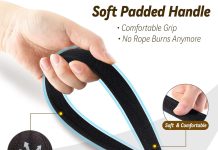In the ongoing debate of collars versus harnesses, we’ve all wondered Which vets recommend? As pet owners, we want the best for our furry companions, including choosing the right gear for their daily walks.
In this article, we will explore the opinion of veterinary professionals on the age-old collar versus harness dilemma, shedding light on the key factors to consider when making this critical decision for your beloved pet.
Whether you have a feisty feline or a playful pup, join us as we uncover the expert insights behind this popular question.
Benefits of Collars
Table of Contents
Ease of Use
Collars are widely recognized for their convenience and ease of use. They can be quickly and effortlessly secured around a dog’s neck, making them a popular choice among pet owners. For a short walk or a quick bathroom break, collars provide a simple solution for everyday outings with our furry friends. With a collar, there’s no complicated process of fitting or adjusting straps, saving us valuable time and effort.
Ability to Attach ID Tags
Another significant advantage of using collars is the ability to attach identification tags. As responsible pet owners, we understand the importance of ensuring our dogs are easily identifiable in case they get lost. Collars offer a perfect platform to display these vital identification tags. Whether it’s a name tag, contact information, or proof of vaccination, having this information readily accessible on our dog’s collar can bring peace of mind and increase the chances of a speedy reunion if the unexpected were to happen.
Cost-Effective
Cost can also be crucial when considering the best option for our dogs. Collars are more affordable than harnesses, making them an attractive choice for budget-conscious pet owners. Not only are they typically priced lower than harnesses, but they also require minimal maintenance and replacement costs. Collars are durable and can withstand the wear and tear of regular use, serving as a cost-effective investment in the long run.
Drawbacks of Collars
Risk of Neck Injuries
One important consideration when using collars is the potential risk of neck injuries, particularly for dogs that tend to pull or lunge. The pressure exerted on the neck can strain delicate structures, leading to muscle strain, tracheal damage, or cervical spine injuries. It’s crucial to be mindful of our dog’s behavior and strength when using a collar, as the constant strain on the neck can have severe consequences for their overall health and well-being.
Less Control over Pulling
Collars may also offer less control over a dog’s pulling behavior than harnesses. Dogs who are strong pullers may exert significant force on their necks when walking on a collar, potentially causing discomfort and making it harder for us to maintain control. This lack of control can be problematic, especially in high-stimulation environments or situations where we must ensure our dog’s safety. We must evaluate our dog’s behavior and walking style to determine whether a collar is the most suitable option.
Potential for Discomfort
Comfort is a vital aspect of ensuring our dog’s well-being. While collars can be comfortable for many dogs, some may find them restrictive or irritating. Certain breeds or individuals with sensitive skin may experience rubbing or chafing from the collar’s materials or buckle.
We must monitor our dog’s reaction to wearing a collar and adjust as necessary to avoid discomfort or skin issues. Ensuring a comfortable fit guarantees our dog’s happiness and contentment during daily activities.
Benefits of Harnesses
Evenly Distributed Pressure
One of the primary benefits of harnesses is their ability to distribute pressure evenly across a dog’s body. Unlike collars, which focus the pressure solely on the neck, harnesses disperse the tension to the chest and back.
This even distribution minimizes the strain on a dog’s neck and throat, promoting better overall comfort and reducing the risk of potential injuries.
Reduces Strain on Neck and Throat
Wearing a harness can be particularly beneficial for dogs with respiratory or neck issues, such as brachycephalic breeds or those recovering from surgery.
The harness’s design allows for a more gentle and supportive approach, relieving any strain on the neck and throat. By bypassing the sensitive areas, harnesses provide a safer and more comfortable option for these dogs to enjoy their daily walks without compromising their health.
Improved Control and Safety
Harnesses offer superior control and safety compared to collars, especially with dogs that tend to pull or have a high prey drive. With most of the pressure distributed throughout the dog’s body, we can maintain better control over their movements and redirect their attention without causing harm or discomfort.
This improved control ensures our dog’s safety during walks, giving us greater peace of mind as we navigate various surroundings and potential distractions.
Drawbacks of Harnesses
More Complicated to Put On
While the benefits of harnesses are undeniable, it’s important to note that they can be more complicated to put on than collars. Harnesses typically involve straps, buckles, or clips that require specific adjustments and fitting.
This aspect can be challenging for some dogs, who may become restless or impatient. However, with some practice and patience, pets and pet owners can become accustomed to the harness application routine.
May Cause Chafing or Rubbing
Like collars, harnesses may cause chafing or rubbing if not correctly fitted or worn for extended periods without breaks. The constant friction between the harness and a dog’s skin can lead to discomfort, irritation, or even skin abrasions.
Regular inspection, proper adjustments, and appropriate padding or lining where necessary can help mitigate these potential issues and ensure the dog’s comfort and safety while wearing a harness.
Potential for Overheating
One drawback to consider when using a harness is the potential for overheating, particularly in hot weather conditions. The harness design covers a larger surface area of a dog’s body, potentially trapping heat and limiting airflow.
This can make our furry friends more susceptible to heat exhaustion or discomfort. It’s essential to monitor our dog’s temperature during walks, provide access to water, and avoid prolonged exposure to high temperatures when using a harness.
Collars vs. Harnesses: Factors to Consider
When deciding between a collar and a harness, several factors should be considered to determine which option suits our dog’s needs and circumstances.
Size and Breed of the Dog
The size and breed of our dogs play a significant role in determining the best choice between a collar and a harness. More miniature or toy breeds, such as Chihuahuas or Yorkshire Terriers, may benefit from the lightweight and simplicity of a collar. On the other hand, larger breeds or dogs with more delicate neck structures, like Greyhounds or Bulldogs, might find a harness more suitable to avoid unnecessary strain or injuries.
Age and Health Condition
Our dogs’ age and health condition also factor into the decision-making process. Young puppies still learning to walk on a leash might benefit from the added control and support a harness provides. Dogs with respiratory issues or neck injuries may require the gentler approach of a harness to ensure their well-being during walks.
Behavior and Training Needs
Consideration should be given to our dog’s behavior and training needs. Dogs that tend to pull or have a strong prey drive may benefit from a harness’s enhanced control. Similarly, dogs undergoing behavior correction training or rehabilitation may find a harness more suitable for redirecting their attention and managing their actions effectively.
Walking Style and Pulling Tendency
Observing our dog’s walking style and assessing their pulling tendency is essential in determining the best option. Dogs that tend to pull heavily may put their neck at risk when using a collar. With their pressure distribution, Harnesses are a better choice for managing and controlling these more robust pullers, making walks safer and more enjoyable for both the pet and the owner.
Expert Opinions on Collars
Traditional Choice for Many Dogs
Collars have long been the traditional choice for dog owners, primarily due to their ease of use and familiarity. The simplicity and convenience of collars make them a go-to option for pet owners, especially for comfortable and well-behaved dogs on a leash. Collars are often considered classics in the dog-walking world, making them popular among owners who appreciate the traditional approach to walking their furry companions.
May Be Recommended for Small, Well-Behaved Dogs
Experts often suggest using collars for small or toy breeds that are known to walk nicely on a leash. These dogs tend to have less strength and pulling tendencies, making collars a suitable and safe option for their daily outings. With proper training and behavior management, small, well-behaved dogs can easily navigate walks on a collar, enjoying the simplicity and convenience of collars.
Preferred for Short Walks or Quick Bathroom Breaks
Experts for short walks or bathroom breaks also favor collars. When we need to take our dog outside for a quick potty break or a short stroll around the block, collars are the most accessible and efficient choice.
Their effortless application and removal make them the go-to option for these brief outings where extended control or support may not be necessary.
Expert Opinions on Harnesses
Suitable for Dogs with Respiratory or Neck Issues
Experts praise Harnesses as a suitable option for dogs with respiratory or neck issues. Breeds with brachycephalic traits, such as Bulldogs or Pugs, often struggle with breathing and must avoid undue pressure on their necks.
Harnesses provide these dogs with the necessary support and comfort, ensuring their safety and well-being during walks.
Recommended for Strong Pullers
For dogs that tend to pull heavily, experts frequently recommend using harnesses. A harness’s even pressure distribution helps redirect the dog’s pulling force, preventing neck strain and potential injuries.
The increased control and stability over the dog’s body allow pet owners a more enjoyable and safer walking experience, even with strong pullers.
Ideal for Training and Behavior Correction
Harnesses are often regarded as an ideal tool for training and behavior correction. With the ability to redirect a dog’s attention and manage its movements more effectively, harnesses provide pet owners with a valuable training aid. Whether it’s addressing leash manners, excessive pulling, or reactivity, harnesses offer support and control that can significantly assist in modifying behavior and achieving desired training outcomes.
Veterinarian’s Recommendations
When deciding between collars and harnesses, it is essential to consult with a veterinarian to ensure a personalized recommendation based on our dog’s specific needs and health conditions. Veterinarians play a crucial role in assessing our dog’s overall well-being and understanding potential limitations or challenges they may face. Their professional expertise enables them to provide valuable insights into the most suitable options for each dog.
Individualized Approach for Each Dog
Veterinarians take an individualized approach when recommending collars or harnesses. They consider various factors personalized to our dog’s unique characteristics, such as breed, age, health condition, and behavior. By considering these individual factors, veterinarians can make expert recommendations prioritizing our dog’s safety, comfort, and overall well-being during their daily walks.
Consideration of Specific Needs and Health Conditions
A vital aspect of a veterinarian’s recommendation is their consideration of specific needs and health conditions. Dogs with respiratory issues, neck injuries, or other medical concerns benefit from the thoughtful evaluation of the potential risks and benefits associated with collars and harnesses. Veterinarians provide valuable guidance in selecting the option that minimizes the chance of exacerbating existing conditions and promotes optimal comfort and safety.
Collars or Harnesses May Be Suggested Based on Assessment
Following a comprehensive assessment of our dog, a veterinarian may recommend either a collar or a harness based on their professional evaluation. This assessment considers all the earlier factors, such as size, breed, behavior, and health condition.
By combining their medical expertise with a deep understanding of our dog’s needs, veterinarians provide invaluable guidance in determining the most suitable option for our furry companion.
The Importance of Proper Fit
Whether we choose a collar or a harness, ensuring a proper fit is crucial to our dog’s comfort, safety, and overall well-being. The following considerations should be considered when fitting a collar or a harness for our dog.
Measurements and Adjustable Features
Taking accurate measurements and utilizing adjustable features are essential for achieving a proper fit. Measuring our dog’s neck and chest circumference allows us to select the appropriate collar or harness size. Adjusting straps, buckles, or clips lets us customize the fit for our dog’s unique body shape and size. This attention to detail ensures that the collar or harness provides maximum comfort and effectiveness during walks.
Avoiding Tightness or Looseness
It is finding the right balance between a snug fit and avoiding excessive tightness or looseness. A collar or harness that is too tight can cause discomfort, restrict movement, and potentially lead to chafing or breathing difficulties.
Conversely, a collar or harness that is too loose may compromise control, safety, and effectiveness. Regular checks of the fit, significantly as our dogs grow or gain/lose weight, will help us maintain the optimal fit and prevent any potential issues.
Distributing Pressure Evenly
When fitting a harness, ensuring the pressure is distributed evenly across the dog’s chest and back is essential. This even distribution reduces the strain on the neck and throat and provides a more balanced and comfortable experience.
Adjusting the harness straps to achieve the correct tension and position helps distribute the pressure effectively, avoiding any concentrated points that could cause discomfort or injury.
Conclusion
Both options have pros and cons in the debate between collars and harnesses. Collars offer ease of use, the ability to attach ID tags, and can be more cost-effective. However, they come with the drawbacks of potential neck injuries, less control over pulling, and the potential for discomfort.
On the other hand, harnesses provide evenly distributed pressure, reduce strain on the neck and throat, and offer improved control and safety. However, they are more complicated to put on, may cause chafing or rubbing, and have the potential for overheating.
Ultimately, the choice between a collar and a harness should be based on several factors, including the size and breed of the dog, their age and health condition, behavior and training needs, and walking style and pulling tendency.
Consulting a veterinarian is crucial in making an informed decision, as they can provide personalized recommendations based on our dog’s specific needs and circumstances.
Regardless of the chosen option, ensuring a proper fit is vital, avoiding tightness or looseness and distributing pressure evenly. By prioritizing our dog’s safety, comfort, and overall well-being, we can enhance their daily walking experience and strengthen the bond between us as their trusted companions.


































